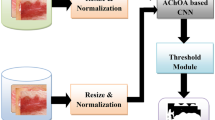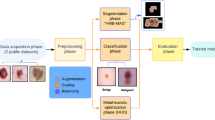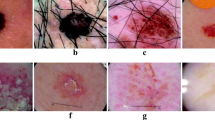Abstract
Psoriasis is a condition of the skin, it causes skin cells to swell, resulting in itchy red patches. Psoriasis now impacts 40% of the population. In current days, technology has emerged as the primary method for identifying psoriatic skin condition by segmenting affected skin images. Furthermore, several researchers have reported promising machine learning approaches for segmenting psoriasis skin images. Even now, the model’s accuracy and time consumption need to be enhanced more consequently, in this paper, we offer an Adaptive Golden Eagle Optimization (IGEO) on the basis of Convolutional Neural Network (CNN) for autonomous segmentation of psoriasis skin images. Following pre-processing, the input images are segmented by the IGEO-CNN approach, with the weight and bias parameters of CNN tuned using this IGEO. Modifying the random sequence on the basis of tent map increases the study effectiveness of the GEO approach. Finally, artifacts are eliminated from the segmented output images using the threshold module. We achieve 97% accuracy via simulation.










Similar content being viewed by others
Data Availability
Data sharing is not applicable to this article because of proprietary nature.
Code Availability
Code sharing is not applicable to this article because of proprietary nature.
References
Tancharoen, D., Tantawiwat, P., & Kovintavewat, P. (2019). Medical Imaging using Automatic Region of Interest Segmentation for Psoriasis Diagnosis. 2019 34th international technical conference on circuits/systems, computers and communications (ITC-CSCC), (pp. 1–4). IEEE
Lu, J., Kazmierczak, E., Manton, J. H., & Sinclair, R. (2012). Automatic segmentation of scaling in 2-D psoriasis skin images. IEEE transactions on medical imaging, 32(4), 19–730.
George, Y., Aldeen, M., & Garnavi, R. (2016). Pixel-based skin segmentation in psoriasis images. 2016 38th annual international conference of the ieee engineering in medicine and biology society (EMBC), (pp. 1352–1356), IEEE
Raj, R., Londhe, N., & Sonawane, R. (2021). Automated psoriasis lesion segmentation from unconstrained environment using residual U-Net with transfer learning. Computer Methods and Programs in Biomedicine, 206, 106123.
Stevens, G., Mascarenhas, M., & Mathers, C. (2009). Global health risks: Progress and challenges. Bulletin of the World Health Organization, 87, 646–646.
Lu, J., Kazmierczak, E., Manton, J. H., & Sinclair, R. (2013). A quantitative technique for assessing the change in severity over time in psoriatic lesions using computer aided image analysis. 2013 35th annual international conference of the IEEE engineering in medicine and biology society (EMBC), (pp. 2380–2383), IEEE
Hameed, N., Shabut, A., & Hossain, M. A. (2018). A Computer-aided diagnosis system for classifying prominent skin lesions using machine learning. 2018 10th computer science and electronic engineering (CEEC), (pp. 186–191). IEEE, 2018
Chan, S., Reddy, V., Myers, B., Thibodeaux, Q., Brownstone, N., & Liao, W. (2020). Machine learning in dermatology: Current applications, opportunities, and limitations. Dermatology and therapy, 10(3), 365–386.
Hogarty, D. T., Su, J. C., Phan, K., Attia, M., Hossny, M., Nahavandi, S., Lenane, P., Moloney, F. J., & Yazdabadi, A. (2020). Artificial intelligence in dermatology—where we are and the way to the future: A review. American journal of clinical dermatology, 21(1), 41–47.
Li, H., Pan, Y., Zhao, J., & Zhang, L. (2021). Skin disease diagnosis with deep learning: a review. arXiv preprint arXiv:2011.05627
George, Y., Aldeen, M., & Garnavi, R. (2017). A pixel-based skin segmentation in psoriasis images using committee of machine learning classifiers. 2017 international conference on digital image computing: Techniques and applications (DICTA) (pp. 1–8), IEEE
Dash, M., Londhe, N., Ghosh, S., Semwal, A., & Sonawane, R. (2019). PsLSNet: Automated psoriasis skin lesion segmentation using modified U-Net-based fully convolutional network. Biomedical Signal Processing and Control, 52, 226–237.
Raju, D., Shanmugasundaram, H., & Sasikumar, R. (2021). Fuzzy segmentation and black widow–based optimal SVM for skin disease classification. Medical & Biological Engineering & Computing, 59(10), 2019–2035.
Arora, R., Raman, B., Nayyar, K., & Awasthi, R. (2021). Automated skin lesion segmentation using attention-based deep convolutional neural network. Biomedical Signal Processing and Control, 65, 102358.
Dash, M., Londhe, N., Ghosh, S., Raj, R., & Sonawane, R. (2020). A cascaded deep convolution neural network based CADx system for psoriasis lesion segmentation and severity assessment. Applied Soft Computing, 91, 106240.
Khatibi, T., Rezaei, N., Ataei Fashtami, L., & Totonchi, M. (2020). Proposing a novel unsupervised stack ensemble of deep and conventional image segmentation (SEDCIS) method for localizing vitiligo lesions in skin images. Skin Research and Technology, 27(2), 126–137.
Mohammadi-Balani, A., Dehghan Nayeri, M., Azar, A., & Taghizadeh-Yazdi, M. (2020). Golden eagle optimizer: A nature-inspired metaheuristic algorithm. Computers & Industrial Engineering, 152, 107050.
Funding
The authors declare that they have competing interests and funding.
Author information
Authors and Affiliations
Contributions
All authors read and approved the final manuscript.
Corresponding author
Ethics declarations
Conflict of interest
On behalf of all authors, the corresponding author states that there is no conflict of interest.
Additional information
Publisher's Note
Springer Nature remains neutral with regard to jurisdictional claims in published maps and institutional affiliations.
Rights and permissions
Springer Nature or its licensor (e.g. a society or other partner) holds exclusive rights to this article under a publishing agreement with the author(s) or other rightsholder(s); author self-archiving of the accepted manuscript version of this article is solely governed by the terms of such publishing agreement and applicable law.
About this article
Cite this article
Panneerselvam, K., Nayudu, P.P. Improved Golden Eagle Optimization Based CNN for Automatic Segmentation of Psoriasis Skin Images. Wireless Pers Commun 131, 1817–1831 (2023). https://doi.org/10.1007/s11277-023-10522-0
Accepted:
Published:
Issue Date:
DOI: https://doi.org/10.1007/s11277-023-10522-0




